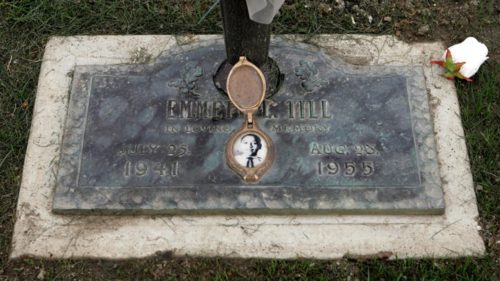Reopening the Emmett Till Case Is a Cynical Play
Share
Explore Our Galleries
Breaking News!
Today's news and culture by Black and other reporters in the Black and mainstream media.
Ways to Support ABHM?
The Justice Department’s investigation of the country’s most infamous lynching case won’t implicate a society full of accomplices.

JACKSON, Miss.—If there is a fight to be had for the future of America, it will be waged in the Delta. The great alluvial plain to the west and north of here, stretching from Vicksburg on up to Memphis, and expanding out like a fan from the mighty Mississippi River, is a storied home to movement, and is the proving ground of the laws and legends that make the country what it is today. Past the soybean farms and pine stands, the cotton plantations and catfish ponds, there’s a political significance to this agricultural expanse. The Mississippi Delta is a reservoir of demographic strength—the blackest part of the blackest state in the country. But it is also one of the poorest places in America, and a region where the struggle for basic human rights is not yet settled.
At the Mississippi Civil Rights Museum in Jackson, it is made clear just how the Mississippi of before begat the Mississippi of today. The state was built on ethnic cleansing, land theft, and terror; and it was maintained even after slavery through terrorism. It’s because of the blackness of the region that the version of Jim Crow implemented there was the zenith—or the nadir—of the form, a roiling campaign of theft and intimidation that over the course of a century watered the fertile soil of the Delta with somewhere near 600 lynchings. There at the museum, the names of Mississippi martyrs like Medgar Evers and Reverend George Lee are raised in honor. Chief among them is Emmett Till, the 14-year-old boy whose lynching proved a horror too far.
I was touring the museum, exiting an exhibit on the life and assassination of Evers, the former state NAACP field secretary, when I received a curious news alert. The Associated Press reported that the Department of Justice had announced it was reopening its investigation into the killing of Till, whose mutilated body was discovered by boys fishing in the Tallahatchie River in 1955. According to the news story, the DOJ announced its intentions in a report from March 2018 that’s just recently been revealed. The move was reportedly sparked by a revelation in The Blood of Emmett Till, a 2017 book by historian Timothy B. Tyson, that the accusation that had allegedly prompted Till’s lynching was false. Specifically, Carolyn Bryant Donham admitted to Tyson that her claim, which she made to her then-husband Roy Bryant and his brother J.W. Milam, that Till had sexually harassed her was a lie…
Read the full article here
Emmett Till Video
Read more Breaking News here
View more Galleries from the ABHM here









Comments Are Welcome
Note: We moderate submissions in order to create a space for meaningful dialogue, a space where museum visitors – adults and youth –– can exchange informed, thoughtful, and relevant comments that add value to our exhibits.
Racial slurs, personal attacks, obscenity, profanity, and SHOUTING do not meet the above standard. Such comments are posted in the exhibit Hateful Speech. Commercial promotions, impersonations, and incoherent comments likewise fail to meet our goals, so will not be posted. Submissions longer than 120 words will be shortened.
See our full Comments Policy here.